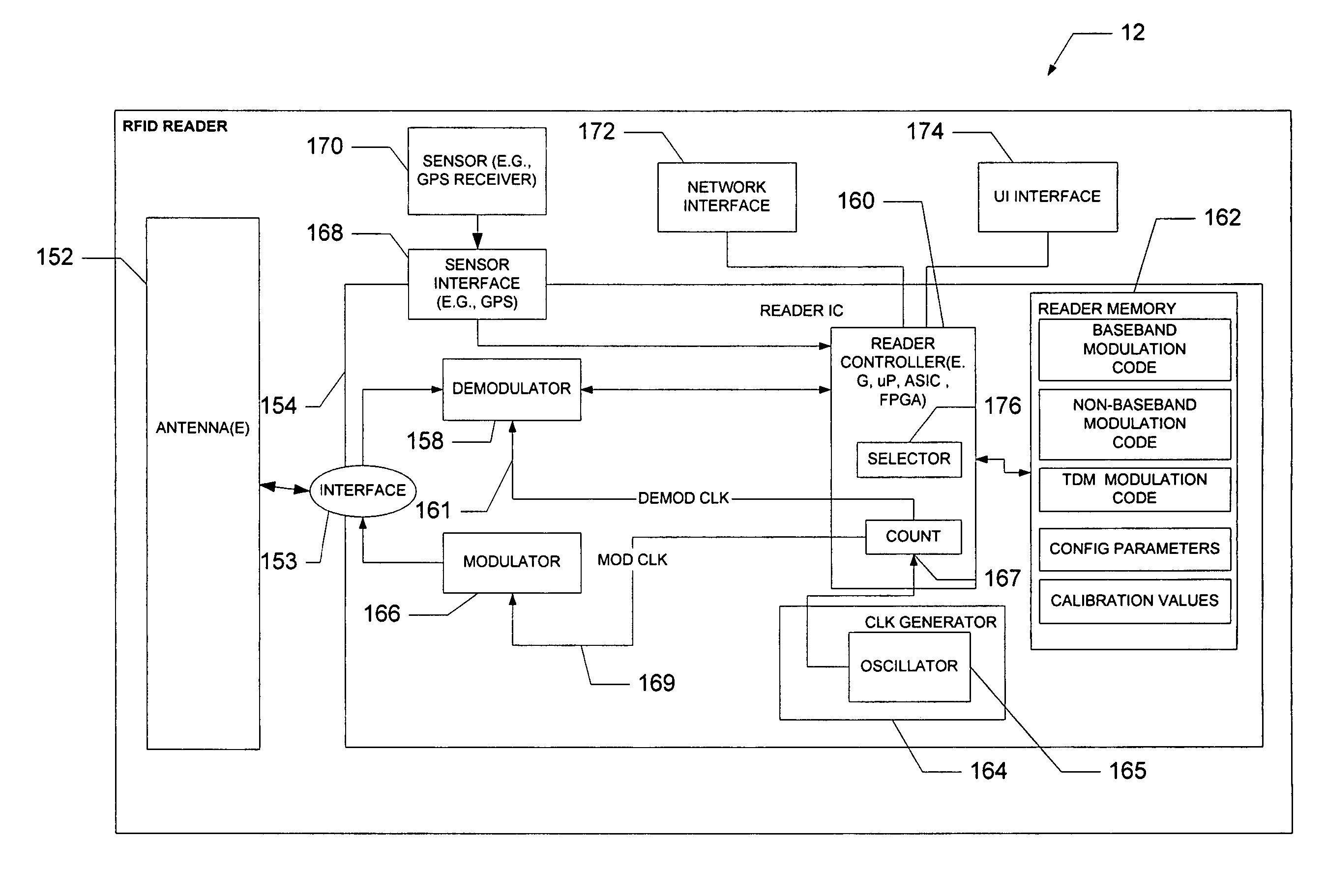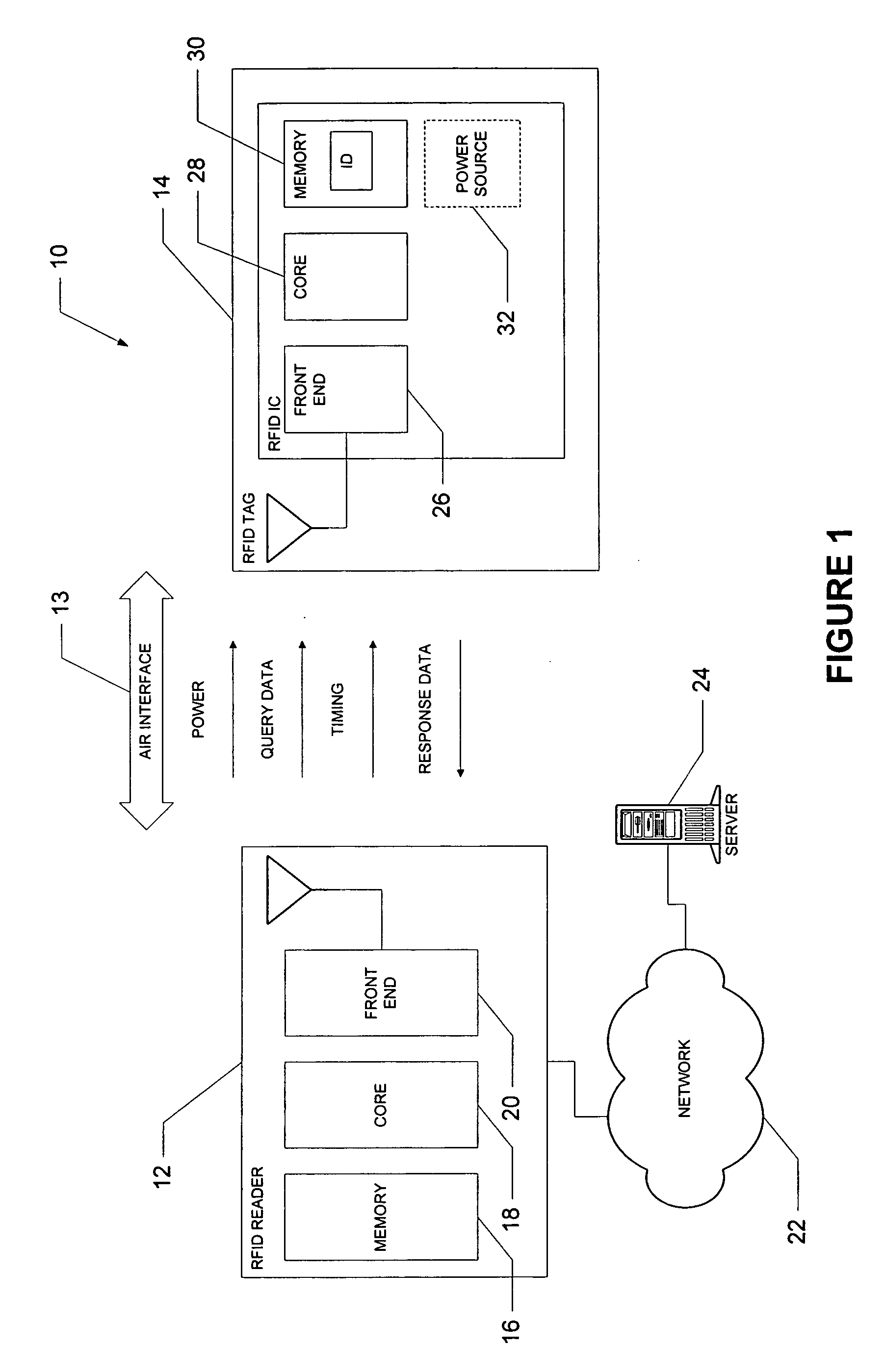RFID tags adjusting to different regulatory environments, and RFID readers to so adjust them and methods
a technology of rfid tags and regulatory environments, applied in the field of wireless communications, can solve the problems of introducing noise and interference, a noisy radio-frequency environment, and a great deal of interference between competing signals, and achieving the effect of reducing noise and interferen
- Summary
- Abstract
- Description
- Claims
- Application Information
AI Technical Summary
Problems solved by technology
Method used
Image
Examples
Embodiment Construction
[0043] A method and an apparatus to configure an RFID system to be adaptable to a plurality of regulatory environments are described. In the following description, for purposes of explanation, numerous specific details are set forth in order to provide a thorough understanding of the present invention. It will be evident, however, to one skilled in the art that the present invention may be practiced without these specific details.
[0044]FIG. 1 is a diagrammatic representation of an exemplary RFID system 10, within which an embodiment of the present invention may be implemented. The RFID system 10 includes an RFID reader 12 that transmits information, via a wireless air interface 13, to one or more RFID tags 14. The air interface 13 enables the RFID reader 12, as shown, to provide power, query data and timing information to an RFID tag 14, responsive to which the RFID tag 14 may provide response data. Specifically, the RFID tag 14 may to scavenge power from a received radio-frequency...
PUM
 Login to View More
Login to View More Abstract
Description
Claims
Application Information
 Login to View More
Login to View More - R&D
- Intellectual Property
- Life Sciences
- Materials
- Tech Scout
- Unparalleled Data Quality
- Higher Quality Content
- 60% Fewer Hallucinations
Browse by: Latest US Patents, China's latest patents, Technical Efficacy Thesaurus, Application Domain, Technology Topic, Popular Technical Reports.
© 2025 PatSnap. All rights reserved.Legal|Privacy policy|Modern Slavery Act Transparency Statement|Sitemap|About US| Contact US: help@patsnap.com



